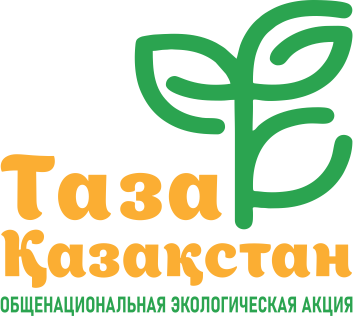Kyrgyzstan’s Innovative Response to Central Asia’s Water Crisis: Artificial Glaciers and Regional Cooperation
Discover how Kyrgyzstan is tackling water scarcity through artificial glaciers and why climate threats in Central Asia demand urgent regional action.

Photo: CEI "Oi Ordo" and FAO
In its 2012 report on the state of global water resources, the United Nations projected that by 2025, 5.5 billion people around the world would be experiencing water stress. Whether this prediction will come true in Central Asia remains to be seen. However, the current situation does not inspire optimism: according to the same UN data, around 2 billion people worldwide are already experiencing water stress — including 81.15 million residents of Central Asia. This article by Cronos.Asia explores the challenges of water scarcity and possible solutions.
Threat Forecasts
A roundtable discussion was recently held in the capital of Kyrgyzstan, Bishkek, with the participation of Marat Imankulov, Secretary of the Security Council of Kyrgyzstan. The event was organized by the Center for Expert Initiatives "Oy Ordo" under the title Water Diplomacy in Central Asia Amidst the Water and Energy Crisis: Problems and Solutions.
According to Imankulov, the risks of water resource degradation in Central Asia and their causes have long been known.
"The main issue lies in the outdated irrigation system," — stressed the Secretary of the Security Council of Kyrgyzstan. — "Due to inefficient water management, the region loses up to $2 billion annually. In conditions of water scarcity, it is critical to urgently implement water-saving technologies — something that has been discussed for years."
It is worth noting that analysts from the Eurasian Development Bank (EDB) previously reported that Central Asian countries lose $4.5 billion in unrealized economic benefits every year due to insufficient cooperation in the water-energy sector. Nonetheless, Imankulov believes that heads of state in the region should revisit agreements related to the use of water resources to better serve the interests of all countries involved.
During the roundtable, experts cited additional alarming UN statistics. According to projections, up to 700 million people worldwide could become "climate refugees" in the coming years.
This issue was also addressed in 2023 by the President of Kazakhstan, Kassym-Jomart Tokayev, during a meeting of the Council of Heads of State of the International Fund for Saving the Aral Sea (IFAS). He shared analysts’ findings suggesting that by 2050, droughts in Central Asia could cause annual economic losses of up to 1.3% of GDP, potentially displacing around 5 million people as internal "climate" migrants.
President Tokayev further stated:
"We are also facing issues of inefficient water use and neglect of environmental consequences. The regulation of the two main rivers in our region — the Syr Darya and Amu Darya — is extremely high. More than 80 reservoirs have been constructed in their basins, with a total volume reaching nearly 65 cubic kilometers."
All these factors pose serious risks to regional security.
Making Water from Air
In Kyrgyzstan, where the Syr Darya originates, glacial melting has long posed a serious problem. The most intensive melting occurs in the Talas Valley, which has higher temperatures compared to other parts of the country.
According to the Central Asian Institute for Applied Earth Research, nearly half of the glaciers in Talas have melted over the past 70 years. If this trend continues, both the Talas region of Kyrgyzstan and Kazakhstan’s Zhambyl region could be left without water.
Nevertheless, the issue of glacier melting is being addressed in Kyrgyzstan — with the help of air.
In the Batken region, the Food and Agriculture Organization (FAO) of the United Nations is implementing a project titled Active Women’s Civil Society Organizations Support Peace in Kyrgyzstan. The initiative also involves UN Women and the Rosa Otunbayeva Initiative Foundation, with funding provided by the UN Secretary-General’s Peacebuilding Fund.
As part of the project, artificial glaciers were constructed in seven villages in Batken in the fall of last year — one in each village. Over the winter, these glaciers accumulated more than 1.5 billion cubic meters of water. According to FAO estimates, this water could irrigate more than 1,750 hectares of land through furrow irrigation (equivalent to 2,451 football fields). With modern irrigation systems, the irrigated area could increase to 15,000 hectares.
FAO expert on agriculture and water resource management, Matraim Jusupov, explained the technology to journalists:
"The key is to select the right site for the future glacier. We take water from a mountain spring and direct it down through a pipeline that ends with a vertical pipe 10–15 meters high. The difference in elevation generates energy, which we use to spray water into the air. During the cold winter, the water freezes, gradually forming an ice cone."
To build the seven glaciers, a total of 6,956 meters of pipeline was installed. According to FAO, this Batken model is now being replicated in other regions of Kyrgyzstan. In addition, small reservoir systems are being proposed to capture meltwater. Clearly, there are many water-saving technologies — and not all of them are expensive.
The Urgency of Solutions
It is evident that the issue of water efficiency in Central Asia demands immediate and effective resolution. Nearly all sectors of the region’s economy depend not only on water consumption but also on its quality. The growing shortage of this critical resource could ultimately lead to widespread poverty — not to mention threats to public health and the environment.
It is also worth recalling that back in 2021, Anatoly Ryabtsev, Head of the "Water Hub" at the Kazakh National Agrarian Research University and Director of the "Kazgiprovodkhoz" project institute, warned that the water scarcity problem in Central Asia would continue to escalate — and should have been addressed long ago.
Read in Russian:
Водный дефицит в Центральной Азии: в Кыргызстане нашли решение этой проблемы
Любое использование материалов допускается только при наличии гиперссылки на cronos.asia.
Подписывайтесь на Telegram-канал Central Asia Cronos и первыми получайте актуальную информацию!



